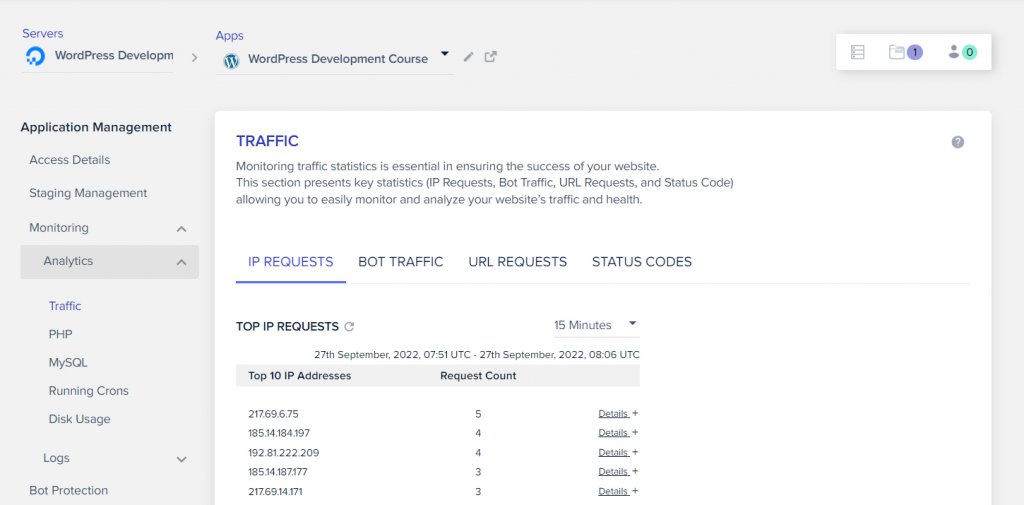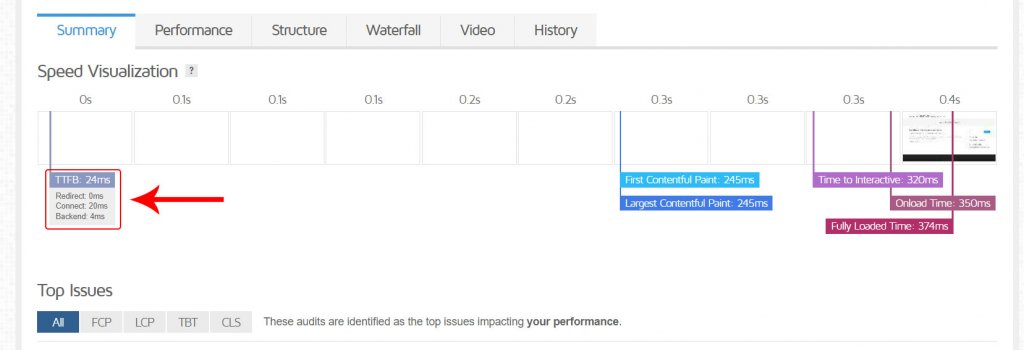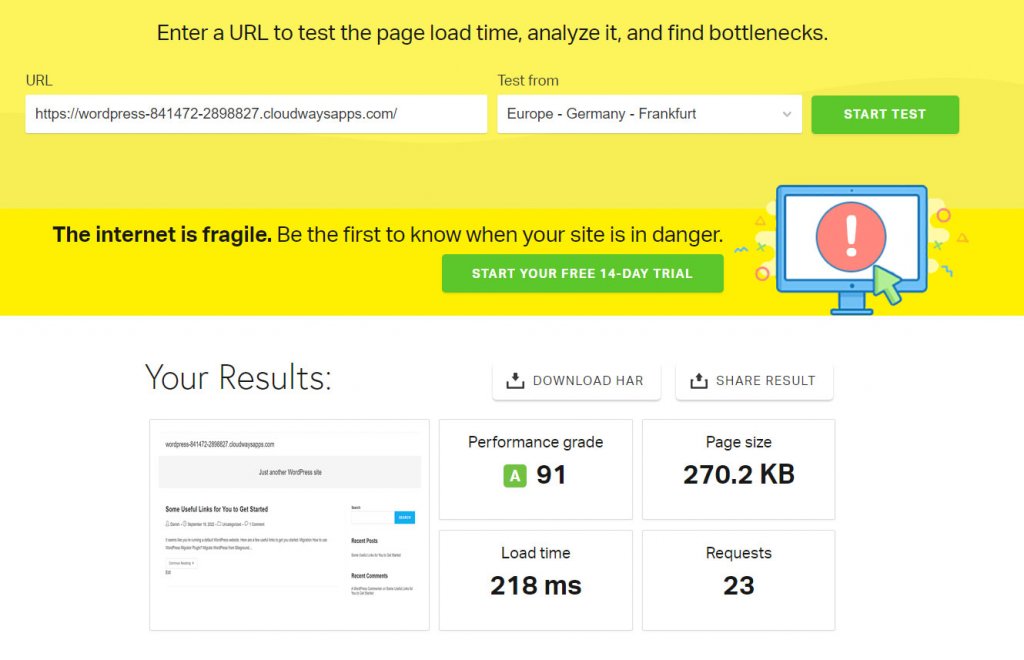As a WordPress user, you may have experienced slow website loading times, even after optimizing the frontend using online tools. This is because optimizing WordPress involves not only frontend optimization but also working on the backend and choosing the right hosting solution. In fact, server-side performance is critical for website operation and loading time. In this article, I will explain what server response time is and how to reduce it on your WordPress site.

To render a web page, a four-step process takes place, starting with the visitor's browser initiating a request and the server processing the necessary assets before sending them back to the browser. The browser then uses these assets to begin rendering the requested web page, which is finally displayed to the visitor. However, the second step (response) is entirely dependent on the hosting server, and any delay or lack of adequate resources can affect website performance and user experience.
Shared hosting, for instance, can suffer from this issue, as resources are distributed among all the sites hosted on the server. As a result, website performance suffers, leading to slow loading times that negatively impact both user experience and SEO. By understanding server response time and taking steps to reduce it, you can improve website performance, enhance the user experience, and increase the overall value of your WordPress site.
What Is Server Response Time?
Server response time, also known as Time To First Byte (TTFB), is a crucial aspect of website performance. It measures the time taken by a server to respond to a visitor's request, which is the time between the client sending the request and the client's browser starting to render the requested web page. TTFB is affected by three key components: sending the HTTP request, processing the request, and processing the response. Factors such as network speed, server distance, and website hosting performance impact TTFB. A website's TTFB should not exceed 200 ms, according to Google guidelines. To improve TTFB, website owners can optimize their website hosting, reduce the size of scripts, and use caching tools. Additionally, it's essential to address any specific issues that slow down the TTFB, such as the slow performance of admin-ajax.php in WordPress. By improving TTFB, website owners can provide a better user experience and improve their website's search engine optimization (SEO) ranking.
Create Amazing Websites
With the best free page builder Elementor
Start NowWhy Reduce Server Response Time?
Having a slow website can be detrimental to any business as it can negatively affect User Experience (UX) and search engine optimization (SEO). Studies have shown that more than 40% of internet users will abandon a website if it takes longer than three seconds to load, which can lead to a loss of potential customers and revenue. Additionally, a website's load time has a direct impact on its search engine ranking, with slower websites being ranked lower on the search engine results page (SERP). Therefore, it is crucial for businesses to pay attention to their server response time and find ways to improve it in order to provide a better user experience, increase website traffic, and ultimately boost revenue.
Ways Of Reducing Server Response Time
Use Content Delivery Network
Server response time can be affected by various factors, but website owners have control over some of the most significant ones. One crucial factor to consider is the distance the data has to travel to and from the server, which can be reduced by choosing a data center closest to the target audience. This can significantly improve latency and, in turn, enhance the server response time.

In case of a global audience, content delivery network (CDN) providers can be used to distribute website assets on globally dispersed nodes. This ensures that when a user requests a page, it is served from the closest node rather than the original hosting server, resulting in faster load times.

The use of CDN can have a significant impact on website performance, as seen from our tests. For instance, we conducted a test on a WordPress site hosted in San Jose, California, USA. Before integrating CDN, the site's load time was 633ms. However, after incorporating a CDN, the load time improved to 523ms, which was previously 633ms. These statistics highlight the importance of using CDN for enhancing website performance, especially for a global audience.
Monitor Website Traffic
As your business grows, it's important to be aware that sudden spikes in website traffic can happen unexpectedly and frequently. This can cause strain on your server's resources, resulting in slow response times and eventually, site downtime. However, it's important to note that you don't have to sacrifice your business's growth potential to prevent these issues.
For instance, let's say you run a coffee shop and want to promote a special offer on your website. If this promotion is successful, it could result in a significant increase in website traffic. This sudden influx of visitors could cause your server to become overwhelmed, leading to slower response times, potential downtime, and a negative impact on your brand's sales and reputation.
To avoid these issues, it's important to choose a web host that is optimized for performance and capable of handling traffic surges. One way to do this is by selecting a hosting solution with server and application monitoring features. This allows you to keep an eye on your server's resources and take immediate action if necessary. You can also track and analyze important metrics such as traffic stats, slow pages, DB queries that take too long to execute, disk space, and more with the application-level monitoring feature.
Ultimately, by being proactive and selecting a hosting solution that can handle your business's growth, you can ensure that your website remains stable and reliable, allowing you to continue to attract customers and build your brand's reputation.

Upgrade Hosting Resources
When launching an online business, it is crucial to start with a thorough assessment of the server resources required for the business. This assessment should not only consider the current needs of the business but also project future requirements. To ensure a smooth process, it is advisable to seek the support of your hosting provider. They can guide you through the process and offer solutions that work for your specific case, sometimes even offering a trial service.
When choosing a PHP hosting provider, look for one that constantly upgrades its infrastructure and uses the latest hardware and updated software such as PHP 7.3 and HTTP/2 servers. For example, Cloudways servers launched after January 12th, 2022, come with Debian 10 and a web stack based on Nginx, which can help serve more audiences rapidly while lowering the load on your server. Additionally, Cloudways offers a MariaDB database, which is an advanced version and a compatible drop-in replacement for the equivalent MySQL version.
It's important to note that the largest server is not always the wisest decision. Efficiently managing resources and applying best development and server management practices can also improve server response time. In addition to having the right hosting provider, it's essential to have a clear understanding of the needs and requirements of the business to ensure a smooth and successful online presence.
Optimize WordPress Database
A database is a repository for storing essential information that needs to be accessed, managed, and updated by servers without any delay. An optimized database allows for faster execution of queries, which in turn leads to faster server response times. However, if a database is not properly maintained or becomes too large, it can slow down the fetching of the required data, resulting in slower server performance.
To improve database performance, one should consider removing unnecessary or obsolete data and optimizing queries for more intelligent and faster execution. Additionally, WordPress database optimization plugins and tweaking the database structure can also help improve database performance.
One may wonder why Cloudways offers MariaDB instead of MySQL. MariaDB is an advanced and compatible drop-in replacement for MySQL. Cloudways currently supports various versions of both MySQL and MariaDB, including MySQL 5.5, MySQL 5.6, MySQL 5.7, MariaDB 10.0, MariaDB 10.1, MariaDB 10.2, MariaDB 10.3, MariaDB 10.4, MariaDB 10.5, and MariaDB 10.6.
The values in maintaining an optimized database are numerous, including faster response times, improved server performance, and more efficient execution of queries. By removing unnecessary data, optimizing queries, and utilizing WordPress database optimization plugins, one can improve database performance and enhance server response times. Additionally, Cloudways' support of multiple versions of both MySQL and MariaDB provides flexibility for users to choose the database that best suits their needs.
Dynamic vs. Static Content
At runtime, dynamic content is generated based on the visitor's request, and it differs for each user. This means that even if two users interact with the same UI, the server will generate different responses based on their input. For example, if one user orders a coffee and another order a hamburger on a restaurant's website, the server will fetch different data sets from the database and prepare unique responses for each order. As the number of users increases, the server's load also increases, and this can impact the website's performance.
On the other hand, static content is hardcoded in the website's HTML, JS, CSS, and images, and it remains the same for every user. This content is delivered quickly as it does not consume many server resources, and the server response time is reduced. However, hosting large static content files on the same server as dynamic content can slow down the website's performance.
To optimize website performance, experts suggest offloading static content to a WordPress CDN. A CDN, or content delivery network, is a group of servers distributed globally that can deliver static content quickly to users from the server closest to their location. By using a CDN, the load time and server resources consumed by static content are significantly reduced, resulting in faster website performance and a better user experience.
Choose Optimized Hosting
Now that you have gained a more profound comprehension of the mechanisms involved in servers' processing of clients' requests, you can make a well-informed decision about the hosting solution that best fits your WordPress website. A dedicated environment is the most suitable option for you as it provides complete control over the server components, enabling you to optimize their performance as per your specific requirements. Moreover, this type of hosting solution offers enhanced security and reliability, ensuring maximum uptime and faster website loading times.
However, if you lack technical expertise or resources, you can opt for a managed WordPress hosting provider. Such providers offer highly-optimized solutions that take care of all server management issues on your behalf, including updates, backups, and security. This option allows you to focus on your core business activities while still enjoying the benefits of a secure and robust hosting solution. With managed hosting, you can also benefit from technical support, which can be beneficial, particularly when you face issues related to your website's performance
TTFB on Cloudways Servers
We conducted a test to assess the performance of a 2GB DigitalOcean server based in the London data center. The server was launched with default settings, and the individual proceeded to install Breeze for the purpose of enabling minification and grouping. Following this, the individual ran a test through GTMetrix and observed that the Time To First Byte (TTFB) was under 200 ms, which adheres to Google's recommended guidelines.

Furthermore, when the same site was subjected to a test on Pingdom, the individual obtained additional results.

Wrapping Up
From a third-party perspective, optimizing the performance of a WordPress site requires adhering to the best practices and reducing server response time. By ensuring that the Time to First Byte (TTFB) value meets your satisfaction, you can proceed with implementing various strategies to speed up your WordPress site. These practices may include optimizing images, using caching plugins, minimizing HTTP requests, and leveraging a Content Delivery Network (CDN).
Furthermore, Cloudways offers a free trial for testing the TTFB of your existing WordPress site. The platform allows for seamless migration of your site with just a few clicks, making it easy to optimize your WordPress site's performance. Be sure to share your results in the comments section below so that others can benefit from your experience. The value of improving your WordPress site's performance extends beyond enhancing the user experience, as it can also boost your search engine rankings, increase traffic, and ultimately lead to higher conversions.





